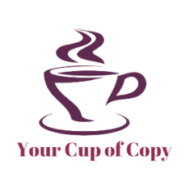When you repurpose content for various social platforms, you know one size doesn’t fit all. Each platform has its unique flavor, much like different coffee blends. You must determine the social media platforms that are right for your business.
To truly engage your audience and maximize your content, you must adapt your approach to each social media channel. How can you create the perfect post for maximum engagement across your chosen platforms?
LinkedIn: The Full-Bodied Espresso
LinkedIn is all about professional networking and thought leadership. Remember, when repurposing content, your writing should be rich, substantial, and packed with valuable insights.
Content types that work well:
- Long-form articles
- Industry reports and data analysis
- Professional tips and advice
- Career development content
- Company updates and achievements
Tips for LinkedIn:
- Use a professional tone without losing your authentic voice
- Include relevant statistics and research
- Engage in thoughtful discussions in the comments
- Use hashtags sparingly and strategically
- Share content during business hours
Instagram: The Visual Latte Art
Instagram is a visual platform where aesthetics reign supreme. Your content here should be visually appealing and easy to digest.
Content types that work well:
- High-quality images and graphics
- Short, engaging videos
- Instagram Stories and Reels
- Behind-the-scenes glimpses
- User-generated content and testimonials
Tips for Instagram:
- Focus on creating visually striking content
- Use Instagram’s native features like filters and stickers
- Craft compelling captions that encourage engagement
- Leverage relevant hashtags to increase discoverability
- Post consistently at optimal times for your audience
Twitter: The Quick Espresso Shot
Twitter is fast-paced and perfect for bite-sized content. Your posts should be concise, timely, and easy to share.
Content types that work well:
- Short, punchy text posts
- News updates and real-time commentary
- Polls and questions
- GIFs and memes
- Links to longer content with enticing previews
Tips for Twitter:
- Keep your tweets short and to the point
- Use hashtags to join relevant conversations
- Engage with your followers and other accounts in your industry
- Mix original content with curated insights
- Tweet frequently throughout the day
Facebook: The Social Coffee House
Facebook is versatile, allowing for various content types. It’s great for building community and fostering discussions.
Content types that work well:
- A mix of text, image, and video posts
- Live videos and Q&A sessions
- Event announcements and updates
- Group discussions and polls
- Longer-form content like notes or articles
Tips for Facebook:
- Utilize questions and calls to action to encourage engagement
- Build a community using Facebook Groups
- Experiment with different post formats to see what resonates
- Share a mix of professional and more personal content
- Utilize Facebook’s scheduling tools for consistent posting
YouTube: The Rich, Long-Lasting Cold Brew
YouTube is ideal for in-depth, evergreen content that provides lasting value to your audience.
Content types that work well:
- Tutorial and how-to videos
- Product reviews and demonstrations
- Interviews and panel discussions
- Vlogs and behind-the-scenes content
- Educational series and webinars
Tips for YouTube:
- Focus on creating high-quality, valuable content
- Optimize your video titles, descriptions, and tags for search
- Create eye-catching thumbnails
- Engage on comments and community posts
- Upload new content to grow your channel consistently
Pinterest: The Visually Rich Frappé
Pinterest is used as a search engine that allows users to look for inspiration and ideas.
Content types that work well:
- Infographics and data visualizations
- Step-by-step guides and tutorials
- Inspirational quotes and tips
- Product showcases
- Recipe and DIY project pins
Tips for Pinterest:
- Create vertical images optimized for Pinterest’s layout
- Use descriptive, keyword-rich pin descriptions
- Organize your content into themed boards
- Utilize Rich Pins to provide more context
- Pin consistently and at optimal times
Brewing Your Perfect Content Mix
Now that we’ve explored different platforms, here are some general tips for repurposing content for a well-rounded content strategy:
- Know your audience: Understand which platforms your target audience prefers and tailor your efforts accordingly.
- Maintain brand consistency: While adapting for each platform, ensure your brand voice and message remain consistent.
- Cross-promote: Guide your audience to follow you on multiple platforms by cross-promoting your content.
- Track and analyze: Use analytics tools to understand what content performs best on each platform and refine your strategy.
- Stay up-to-date: Social media platforms frequently update their features and algorithms. Stay informed to make the most of new opportunities.
- Quality over quantity: It’s better to master a few platforms than to spread yourself too thin trying to be everywhere.
- Engage authentically: Respond to comments, participate in discussions, and build genuine connections with your audience.
By adapting your content to suit each platform’s unique characteristics, you’ll create a perfect brew that engages your audience and keeps them returning. This previous blog post explains how to repurpose content effectively.
Remember, being successful on social media means creating great content and serving it correctly on the right platform.
Are you uncertain about repurposing your content? Schedule a coffee chat with Cindy to see how Your Cup of Copy can help you achieve your goals.

